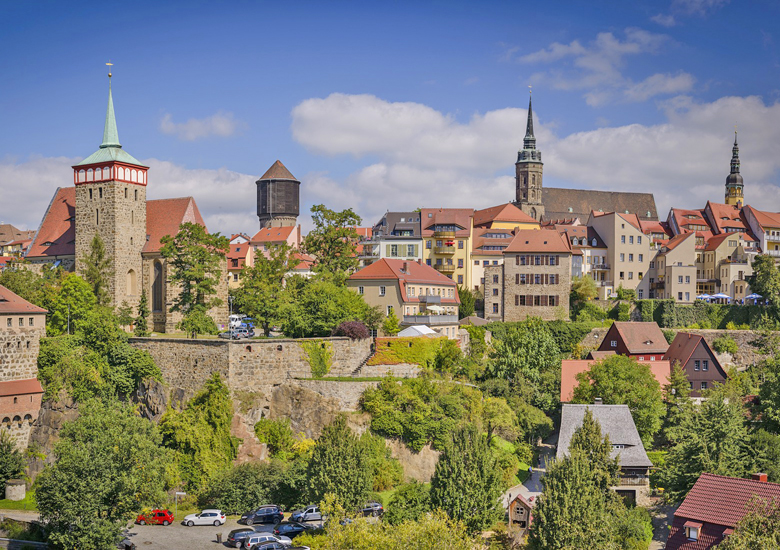Bautzen is a hill-top town in eastern Saxony – Germany , It’s called the “city of towers”, as there are many towers. Germany, and administrative centre of the eponymous district. It is located on the Spree River. As of 2013, its population is 39,607. Asteroid 11580 Bautzen is named in honour of the city. Bautzen is often regarded as the unofficial, but historical capital of Upper Lusatia, and it is the most important cultural centre of the Sorbs, a Slavic people.
History : In the 3rd century AD an eastern Germanic settlement existed here, but excavations have proved that the region was already inhabited as early as the late Stone Age. Sorbs arrived in the area during the Migration period in the sixth century AD. The first written evidence of the existence of the city was in 1002. In 1018 the Peace of Bautzen was signed between the German king Henry II and the future King of Poland Boleslaw I the Brave. The treaty left Bautzen (Budziszyn in modern Polish) under Polish rule. In 1032 the city passed to the Holy Roman Empire, in 1319 to Czech Crown lands and in 1635 to Saxony. During the Middle Ages it was a member of the Six Cities’ Alliance of the Upper Lusatian cities of Gorlitz, Zittau, Lobau, Kamenz, Lauban and Bautzen. It was the site of one of the battlefields of the Napoleonic War Battle of Bautzen in 1813. In 1839 the Sorbian student organization Societas Slavica Budissenensis was founded in the city. The Sorbian House (Upper Sorbian: Serbski Dom), a Sorbian cultural centre, was opened in the city in 1904.
Furthermore, Bautzen was infamous throughout East Germany for its penitentiaries. Bautzen I was used as an official prison, soon to be nicknamed Gelbes Elend (“Yellow Misery”), whereas the secret Bautzen II was used as a prison for prisoners of conscience. Bautzen I is still used as a prison, and Bautzen II has served as a memorial since 1993. In 2002 the city commemorated its 1000th birthday.
Acces : Coordinates:51.181389, 14.424167 / Bautzen is accessible with regional trains from Dresden (which is connected to the German ICE and IC network, and thus, reachable easily from all over Germany). At the Bautzen railway station take the bus no. 103 headings to Hoyerswerda and exit at “Lauengraben”. From here walk 5 minutes.
By car : Use the freeway A4 and take the exit “Bautzen-West” (No. 89). From here go ahead in Hoyerswerda direction. By train : From the Bautzen railway station take the bus no. 103 heading to Hoyerswerda and exit at “Lauengraben” By plain : From Dresden airport take the bus no. 80 heading to “Bahnhof Klotzsche, Dresden”. Exit at the final station and take a regional train or regional express to Bautzen from here. At the Bautzen station take the bus no. 103 headings to Hoyerswerda and exit at “Lauengraben”
Tourist-Information, Hauptmarkt 1, 02625 Bautzen, Bautzen, Saxony, Germany
Highlights :
- Old Waterworks and Church of St. Michael , Bautzen has a very compact and well-preserved medieval town centre with numerous churches and towers and a city wall on the steep embankment to the river Spree, with one of the oldest preserved waterworks in central Europe (built 1558).
- Sites of interest include: The Reichenturm, one of the steepest leaning and still passable towers north of the Alps , Ortenburg Castle , The Old Waterworks, an architectural monument and museum
- Saint Peter’s Cathedral, Eastern Germany’s only historic interdenominational church edifice ,Hexenhaus (Witch’s House), oldest preserved residential building (built in 1604)
- There are four museums including the Stadtmuseum Bautzen (“Bautzen city Museum”)
- the Sorbisches Museum (“Sorbian Museum”, Sorbian: Serbski muzej).
Go next :

